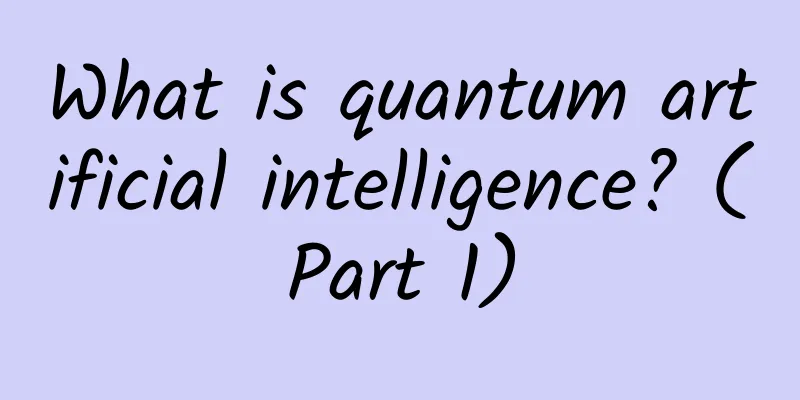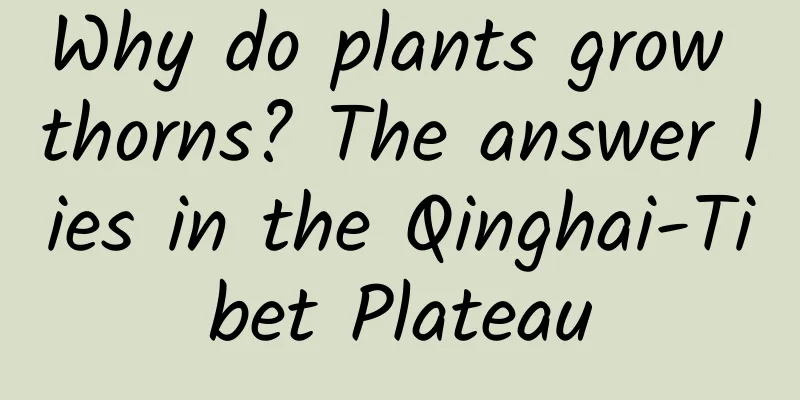What is quantum artificial intelligence? (Part 1)

|
Produced by: Science Popularization China Author: Luan Chunyang (Department of Physics, Tsinghua University) Producer: China Science Expo "Quantum computing" and "artificial intelligence" are the two most "trendy" terms in the current technology circle. ChatGPT, which became popular in 2023, is called the "universal toolbox" for its real-time intelligent interaction with humans, and has once again set off a wave of artificial intelligence. In the field of quantum computing technology, many exciting results have emerged, such as the further upgrade of the "Sycamore" quantum computer, whose computing power far exceeds all current classical supercomputers. Quantum computing diagram (Photo source: veer photo gallery) So, if we combine quantum computing and artificial intelligence, and use the super computing power of quantum computers to accelerate and improve the learning and evolution of artificial intelligence, wouldn’t it be possible to create the intelligent quantum computer “MOSS” in the movie? Similarly, artificial intelligence technology should also be able to assist quantum computers in optimizing the solution of certain specific complex problems, fully unleashing the huge potential of quantum computing. In fact, this idea coincides with the ideas of computer scientists and quantum physicists. Combining traditional artificial intelligence technology with quantum computing has become a reality. This combination also has a special name - Quantum Artificial Intelligence (QAI). It can play a huge application value of "1+1>2" in the fields of algorithm optimization problems, natural language processing, image recognition, and basic scientific research. How weak AI becomes stronger I believe that some friends have become accustomed to using chatGPT to help them deal with various small things in daily life, but it still has many bugs that make people laugh and cry. This is because its intelligence is based on the pre-compiled algorithms and programs of the computer to analyze and process massive amounts of data to make decisions. This leads to great limitations on its calculations and decisions, and it still belongs to the category of "weak artificial intelligence". How to further upgrade the current "weak artificial intelligence" that can only solve specific problems into "strong artificial intelligence" that can perform human creative work, or even "super artificial intelligence" that is far superior to human intelligence, has always been one of the topics that scientists have been constantly exploring. On this road of exploration, artificial intelligence has gone through three important stages of development. The 1950s and 1960s were the early exploration stage, and the concept of "artificial intelligence" was initially established. The 1970s and 1980s were a difficult development period. As the computing power of transistor computers continued to develop, machines based on professional knowledge and specific rules were developed to simulate human experts in making decisions - expert systems. However, it was difficult for it to handle complex real-world problems, so it was not a general-purpose machine as we know it today. Intelligent computer "expert systems" with specialized knowledge and experience (Image source: Opengate) The 1990s to the present is the era of machine learning and big data. The computing power and data volume of computers have experienced explosive growth, further promoting the progress of artificial intelligence technology in natural language processing (NLP), image recognition and optimization, and autonomous driving. However, AI models require a large amount of labeled data for training, which requires massive computing resources and high operation and maintenance costs. For example, large-scale natural language processing (NLP) models require high-performance servers to perform tens of billions of floating-point operations (GigaFLOPs) to process a single input parameter, which requires a large-scale GPU cluster or dedicated AI chip. The cost of a single training is estimated to be as high as 100 million yuan, and it takes several days to several months to complete the training. It is not difficult to see that every breakthrough in artificial intelligence technology has benefited from the explosive growth of computer computing power , such as the development of ultra-large integrated circuits and the continuous optimization of algorithms. At the same time, every decline in the climax of artificial intelligence technology research is also limited by computer computing resources and high operation and maintenance costs. Scientists estimate that under optimistic circumstances, the computing power of existing classical computers is expected to double every two years. However, the large model data required for training in the field of artificial intelligence doubles approximately every quarter. Therefore, to meet the needs of traditional artificial intelligence research, it is necessary to find more efficient computing methods to replace existing classical computers. Quantum computing + artificial intelligence: a new combination that opens up your mind Unlike artificial intelligence, which has developed stumblingly over the past 70 years, quantum computing, as a rising star, has made great progress in just over 30 years. Traditional artificial intelligence technology relies on the algorithmic operations of classical computers, which are performed in binary form of 0 or 1. Quantum artificial intelligence is based on the parallel operation rules of quantum computers, and its basic operation unit is the quantum bit that can be in a superposition of 0 and 1 at the same time . Quantum computing + artificial intelligence diagram (Photo source: Veer Gallery) The "quantum" here is not a real particle, but a very small physical unit, which is like a mini building block in the microscopic world. In the real world, we are used to objects being in a certain state, such as a table is solid and an apple is red. But in the quantum world, objects can be in multiple states at the same time. Schematic diagram of the "Schrödinger's cat" thought experiment (Photo source: Veer Gallery) In other words, a quantum computer only needs N quantum bits to process 2^N data in a classical computer in parallel, which will far exceed the computing power of today's most powerful supercomputers. Therefore, the birth of quantum computers has opened up a new way of thinking for computer scientists, that is, to use the huge potential of parallel computing to solve certain specific algorithmic problems in artificial intelligence research. So why can quantum computing + artificial intelligence bring greater advantages? We can use a story about "roulette game" to illustrate. Suppose there are many roulette wheels in an amusement park, and each wheel has 38 numbers on it. Ideally, the probability of selecting each number after each wheel stops spinning should be 1/38. But in reality, there are always some wheels that are not perfectly symmetrical, which means that the probability of certain numbers appearing is higher. Players can find those imperfectly symmetrical wheels based on a large number of statistical results, and bet on different numbers on imperfectly symmetrical wheels to increase their chances of winning. Roulette Spin Game (Photo source: Veer Gallery) However, this is not an easy task. This is because obtaining the bias of specific numbers on different roulette wheels requires a lot of attempts and complex data processing. Therefore, players need to hire a large number of assistants to stay in front of each roulette wheel and constantly count the corresponding probability of each number on the roulette wheel. However, this process not only takes a lot of time and energy from the players, but also requires extra money to hire a sufficient number of assistants. Therefore, this is a very costly search. The above "roulette game" story is similar to the process of traditional artificial intelligence solving specific search problems. The difference is that the "player" here is the user himself, the "hired assistant" is more computing servers in the classical computer, and the "roulette" is the search problem that needs to be solved. In other words, traditional artificial intelligence needs to "hire" more computing servers in the classical computer, and pay extra "energy cost" and "time cost" to complete the corresponding computing tasks. For quantum artificial intelligence, this kind of multi-tasking parallel processing problem is much more efficient. Thanks to the super-strong parallel computing power of quantum computing, a "player" with the "buff" of quantum artificial intelligence can independently guard and track each "roulette wheel" at the same time, and quickly retrieve and process the corresponding data. In other words, quantum artificial intelligence can explore multiple possibilities at the same time, thereby finding the optimal solution faster, allowing the "player" to maintain an advantage in the game. Conclusion Since its inception, the concept of quantum artificial intelligence has attracted the attention of countless scientists. In fact, it has played a role of 1+1>2 in many fields. Accelerating drug development, efficiently optimizing logistics and transportation, financial market forecasting... countless application scenarios and unlimited application value. So in what aspects does quantum artificial intelligence enrich human life? How does it exert its strength? Let us reveal the mystery for you in the next article. |
<<: "Quantifying" happiness: AI deciphers the dopamine code
Recommend
The "residents" of the rainforest are quietly changing
Produced by: Science Popularization China Author:...
How effective is paid promotion of mobile apps? With all the chaos going on, who can you trust?
We spend money on promotion for the sake of resul...
Chemical pollution cannot be ignored. How much do you know about space station cleaning?
Recently, a study showed that the concentration o...
How much does dog meat cost per pound in 2021? How much does cooked dog meat cost per pound now?
With the arrival of National Day, the weather in ...
Can green prevent eye fatigue? Does mydriasis eye examination cause serious damage to the eyes? Don’t be blinded by these rumors!
Eyes are the windows to the soul and one of the m...
Science in the Week: A Woman Lost Sensation in Her Right Hand After Taking a One-Hour Nap on Her Arm
1. Pickled cabbage buns are pickled in a pit Rece...
Why do earthquakes occur frequently in Sichuan?
Yesterday, a magnitude 6.8 earthquake occurred in...
What are the APP promotion models and what are the App marketing promotion methods?
The main marketing models for APP promotion inclu...
Hisense once again focuses on ULED, and Internet TV competition enters the era of ultra-high-definition images
After rounds of questioning and verbal battles fu...
Are you easily fatigued for no apparent reason? Maybe it’s because there’s too much noise around you
Noise is a sound that is too loud and can easily ...
Don't give up on the checkup! These "embarrassing" physical examination items can actually detect these serious diseases
Rectal examination, stool examination, breast pal...
iOS Memory Management: Memory Optimization
The so-called memory optimization means that in t...
Do you know these three ways to post on Toutiao?
I saw many readers asking me how to publish artic...
How do Qianchuan video delivery and direct live broadcast rooms cooperate?
How to get Qianchuan search traffic bonus? How do...









